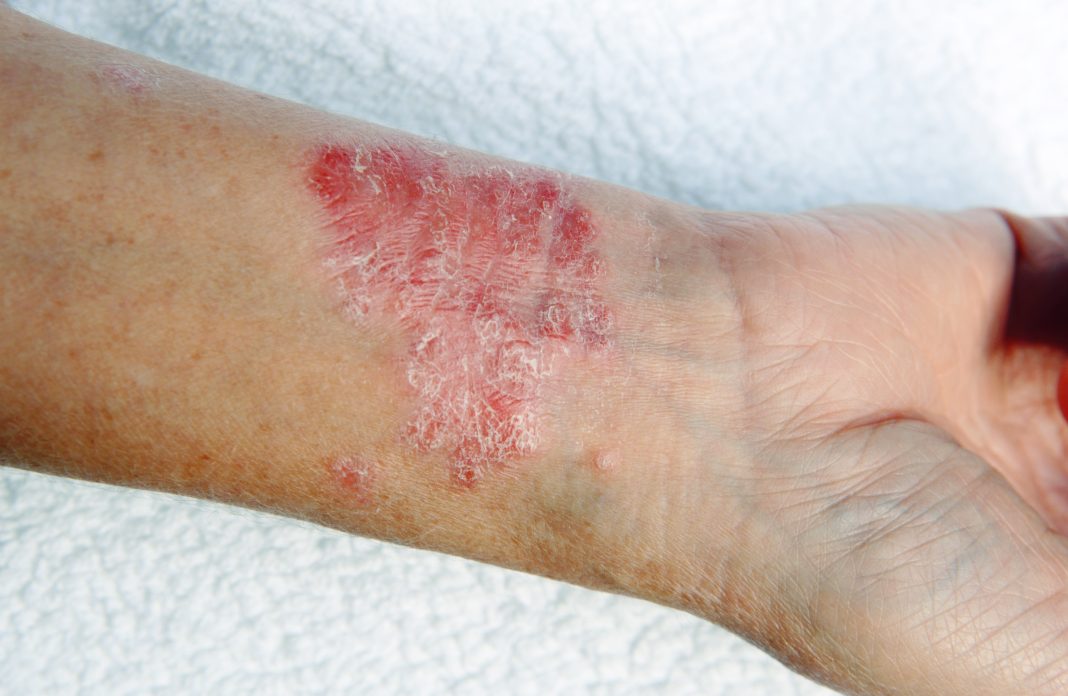Researchers at the Peter Doherty Institute of Infection and Immunity discovered distinct mechanisms controlling different types of immune cells, and found that by targeting these mechanisms, they could selectively eliminate “problematic cells” and reshape the skin’s immune landscape. Their findings may lead to new treatments for autoimmune diseases, such as psoriasis and vitiligo.
Their new study is published in Science in an article titled, “Divergent molecular networks program functionally distinct CD8+ skin-resident memory T cells.”
“Skin-resident CD8+ T cells include distinct interferon-γ–producing [tissue-resident memory T type 1 (TRM1)] and interleukin-17 (IL-17)–producing (TRM17) subsets that differentially contribute to immune responses,” the researchers wrote. “However, whether these populations use common mechanisms to establish tissue residence is unknown. In this work, we show that TRM1 and TRM17 cells navigate divergent trajectories to acquire tissue residency in the skin.”
University of Melbourne’s Simone Park, PhD, an honorary research fellow and former postdoctoral fellow in the Mackay Lab at the Doherty Institute, and lead first author of the study, said that this research is the first to describe the unique elements that control various types of skin TRM cells in animal models, offering precise targets for potential treatment strategies.
“Specialized immune cells in our skin are diverse: many are critical to prevent infection and cancer, but others play a big role in mediating autoimmunity,” said Park.
“We discovered key differences in how distinct types of skin T cells are regulated, allowing us to precisely edit the skin’s immune landscape in a targeted way.”
University of Melbourne’s Susan Christo, PhD, senior research officer in the Mackay Lab at the Doherty Institute and co-first author of the study, explained how these discoveries could advance efforts to treat skin disease.
“Most autoimmune therapies treat the symptoms of the disease rather than addressing the cause. Conventional treatments for skin disorders often impact all immune cells indiscriminately, meaning that we could also be wiping out our protective T cells,” said Christo.
“Until now, we didn’t know how to pick apart ‘bad’ T cells in the skin from the ‘good’ protective ones. Through this research, we discovered new molecules that allow us to selectively remove disease-causing T cells in the skin.”
University of Melbourne’s professor Laura Mackay, PhD, senior author of the study, explained that these findings could pave the way for more precise and long-lasting therapies for skin disease.
“Skin conditions like psoriasis and vitiligo are difficult to treat long-term. The T cells driving disease are hard to remove, so patients often need life-long treatment. Our approach has the potential to revolutionize the way we treat these skin disorders, significantly improving outcomes for people dealing with challenging skin conditions,” said Mackay.
With the study demonstrating successful removal of specific skin T cells in animal models, further research is necessary to validate the efficacy of these strategies in human subjects. Park hopes the study will inspire the development of new treatments for skin disease.
“These discoveries bring us one step closer to developing new drugs that durably prevent autoimmune skin disorders without compromising immune protection,” said Park.



